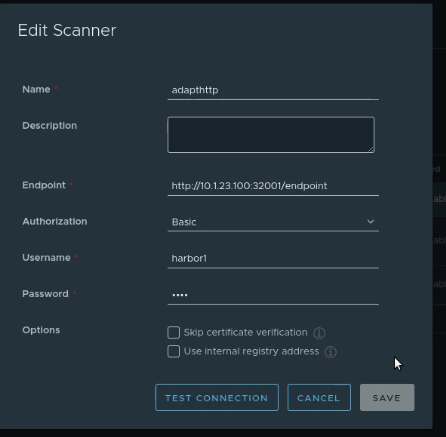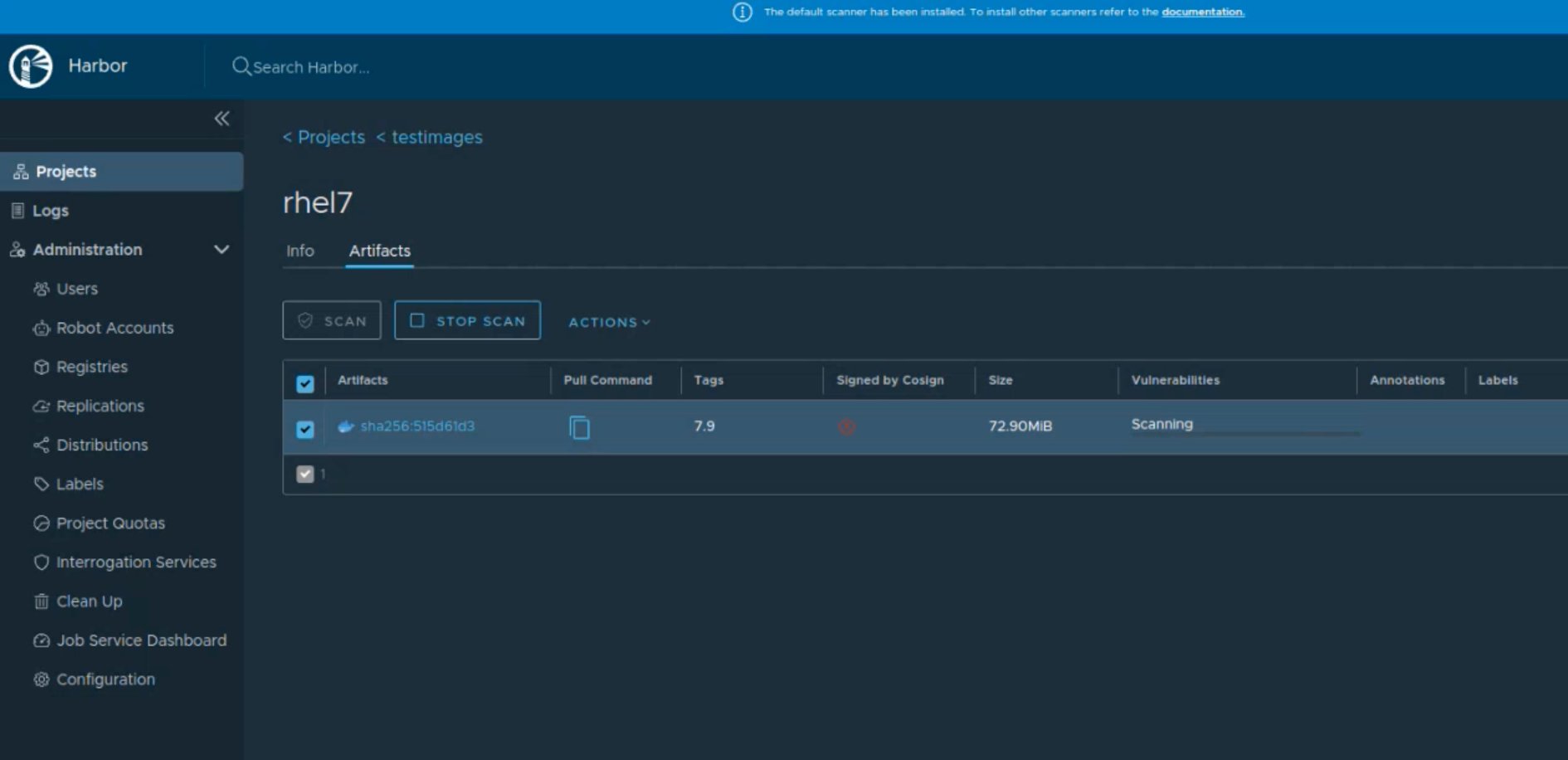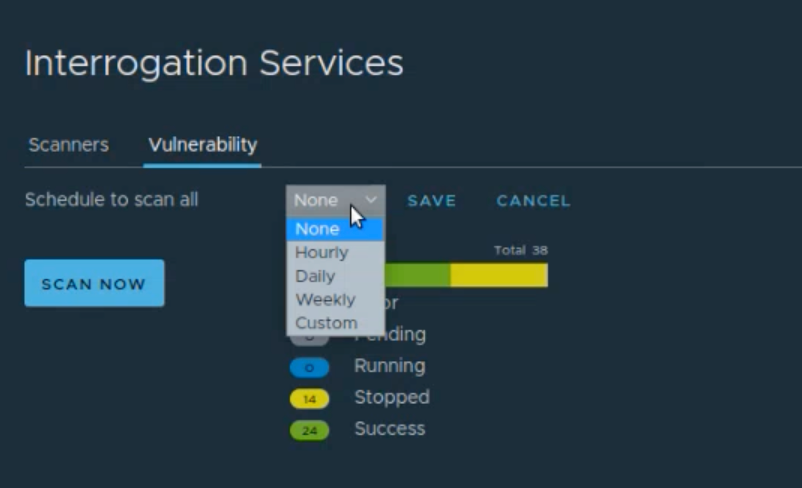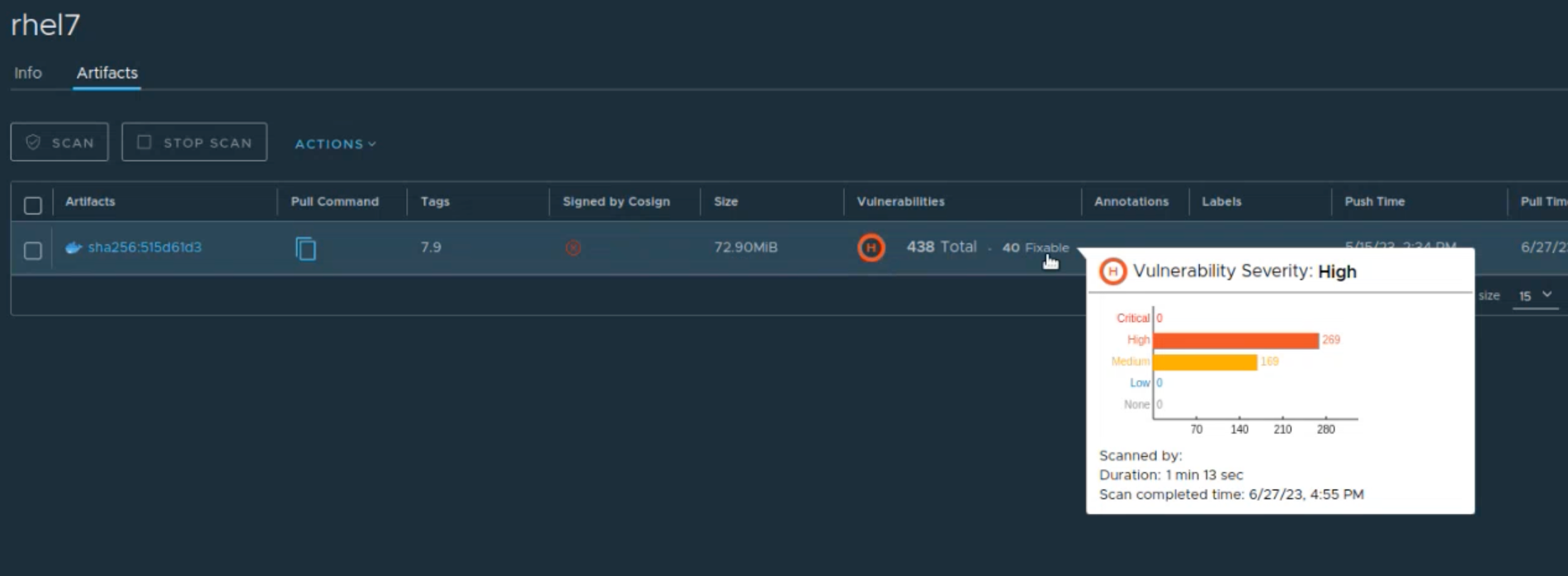Harbor Pluggable Scanner Module
Scanning Harbor Registries Using the Pluggable Scanner
NeuVector supports invoking the NeuVector scanner from Harbor registries through the pluggable scanner interface. This requires configuration of the connection to the controller (exposed API). The Harbor adapter calls controller endpoint to trigger a scan, which can scan automatically on push. Interrogation services can be used for periodic scans. Scan results from Federation Primary controllers ARE propagated to remote clusters.
There is an issue with the HTTPS based adapter endpoint error: please ignore Test Connection error, it does work even though an error is shown (skip certificate validation).
Deploying the NeuVector Registry Adapter
The 5.2 Helm chart contains options to deploy the registry adapter for Harbor. It can also be pulled manually from the neuvector/registry-adapter repo on Docker Hub. Options also include setting the Harbor registry request protocol and the basic authentication secret name.
After deployment of the adapter, it is necessary to configure this in Harbor.

The adapter endpoint must be entered, and the adapter connects to the controller, which is typically exposed as a service externally so the adapter can connect to it. In addition, authentication credentials for a valid NeuVector user must be entered.
Scanning Images from a Harbor Registry
After successful deployment and connection to a controller, an image scan can be manually or automatically triggered from Harbor.

Periodic scans (scheduled) can be configured through Interrogation Services in Harbor, to make sure the latest CVE database is used to rescan images in registries.

Scan results can be viewed directly in Harbor.

Sample Deployment Yaml
Below is an example yaml:
apiVersion: apps/v1
kind: Deployment
metadata:
name: neuvector-scanner-pod
namespace: neuvector
spec:
strategy:
type: RollingUpdate
rollingUpdate:
maxSurge: 1
maxUnavailable: 0
replicas: 1
selector:
matchLabels:
app: neuvector-scanner-pod
template:
metadata:
labels:
app: neuvector-scanner-pod
spec:
imagePullSecrets:
- name: regsecret
containers:
- name: neuvector-scanner-pod
image: neuvector/scanner:latest
imagePullPolicy: Always
env:
- name: CLUSTER_JOIN_ADDR
value: neuvector-svc-controller.neuvector
restartPolicy: Always
hostAliases:
- ip: "10.1.5.106"
hostnames:
- "harbor270.com"
---
apiVersion: v1
kind: Service
metadata:
name: neuvector-service-registry-adapter
namespace: neuvector
spec:
ports:
- port: 9443 #https
#- port: 8090 #http
nodePort: 32000
name: registry-adapter
protocol: TCP
type: LoadBalancer
selector:
app: neuvector-registry-adapter-pod
---
apiVersion: apps/v1
kind: Deployment
metadata:
name: neuvector-registry-adapter-pod
namespace: neuvector
spec:
selector:
matchLabels:
app: neuvector-registry-adapter-pod
replicas: 1
template:
metadata:
labels:
app: neuvector-registry-adapter-pod
spec:
serviceAccount: basic
serviceAccountName: basic
imagePullSecrets:
- name: regsecret
containers:
- name: neuvector-registry-adapter-pod
image: neuvector/registry-adapter:latest
imagePullPolicy: Always
env:
- name: CLUSTER_JOIN_ADDR
value: neuvector-svc-controller.neuvector
- name: HARBOR_SERVER_PROTO
value: https #Need to mod. http/https
- name: HARBOR_BASIC_AUTH_USERNAME
valueFrom:
secretKeyRef:
name: neuvector-registry-adapter
key: username
- name: HARBOR_BASIC_AUTH_PASSWORD
valueFrom:
secretKeyRef:
name: neuvector-registry-adapter
key: password
restartPolicy: Always
For OpenShift 4.6+, also add the route:
apiVersion: route.openshift.io/v1
kind: Route
metadata:
name: neuvector-route-registry-adapter
namespace: neuvector
spec:
to:
kind: Service
name: neuvector-service-registry-adapter
port:
targetPort: registry-adapter
tls:
termination: passthrough